HARD
Earn 100
How many moles of Grignard reagent will be consumed during the following reaction for one mole of the starting compound?
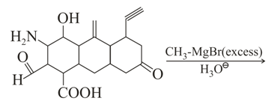

50% studentsanswered this correctly
Important Questions on Aldehydes, Ketones and Carboxylic Acids
HARD
The most suitable reagent for the given conversion is:
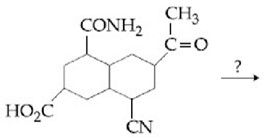
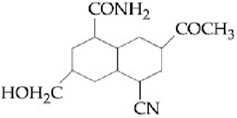
MEDIUM
The major product of the following reaction is:

MEDIUM
chlorosodium acetate on boiling with aqueous sodium nitrite gives
MEDIUM
Which of the following acid will form an (a) Anhydride on heating and (b) Acid imide on strong heating with ammonia?
MEDIUM
Propanoic acid undergoes reaction to give chloropropanoic acid. The product obtained is
HARD
The major product of the following reaction is:
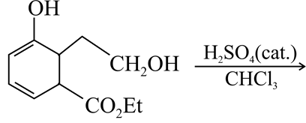
MEDIUM
Consider the acid strength of the of carboxylic acids
(i)
(ii)
(iii)
(iv)
MEDIUM
How will you bring about the following conversion in not more than two steps?
Benzoic acid to m-Nitrobenzyl alcohol
MEDIUM
The major product obtained in the reaction of aniline with acetic anhydride is
EASY
Which of the following acids, does NOT undergo Hell-Volhard-Zelinsky reaction?
MEDIUM
An organic compound A upon reacting with gives B. On heating, B gives C. C in presence of KOH reacts with Br2 to give CH3CH2NH2. A is :
MEDIUM
The major product of nitration of benzoic acid is
HARD
List includes starting materials and reagents of selected chemical reactions. Listgives structures of compounds that may be formed as intermediate products and/or final products from the reactions of List.
| List-I | List-II |
|---|---|
(I) 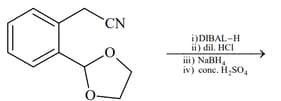 |
 |
(II)  |
 |
(III)  |
 |
(IV)  |
 |
 |
|
 |
Which of the following options has the correct combination considering List and List?
EASY
Name the end product in the following series of reactions ections

EASY
Which of the following is the correct sequence of relative acidic strength?
MEDIUM
Among -chloro propanoic acid, -chloro propanoic acid, -dichloro acetic acid and propanoic acid the values will be in the order,
HARD
In the reaction,
,
the product C is :
EASY
In the presence of a small amount of phosphorous, aliphatic carboxylic acid reacts with chlorine or bromine to yield a reaction in which, hydrogen is been replaced by halogen. This reaction is known as
HARD
With dehydrating agent present which dicarboxylic acid is least reactive towards forming an anhydride?


